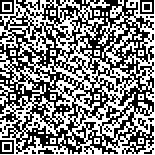| 摘要: |
| 在全球化以及教育改革不断深
入的背景下,建筑教育交流越来越频繁,
各种联合教学逐渐趋于常态化。联合教
学从表象上看是一种“合与作”的关系,
但本质上却隐含着各种差异,存在着跨
界思考和多元的思想内涵,也包含着相
互学习、沟通和协调。联合的目的是发展
和提高,是让不同的思想和价值理念相
互碰撞,让不同的教学方法相互渗透、不
同的技能手段相互结合,并为提高教学
质量、开发学生智力潜能、拓宽视野以及
广泛开展教学改革指明新的发展方向。 |
| 关键词: 联合教学 跨界 多元 |
| DOI: |
| 分类号: |
| 基金项目: |
|
| Transboundary and Pluralism in Combination— Inspiration and Thoughts From Architecture Joint Studio Teaching |
|
DENG Shuyang,LONG Hao
|
| Abstract: |
| With the deepening globalization and educational reform, there are more
frequent exchanges in architecture education and joint studios in various forms become
normal. Superficially, joint teaching seems to be an integrated relationship, but in
essence it implies various differences. It includes intercultural thinking, pluralistic
ideas, as well as mutual learning, communication and coordination. The aims of
joint studios are developments and improvements. Collisions among different values,
penetration of teaching methodologies, and exchanges of various techniques are helpful
for making ways for improving teaching quality, developing intellectual potential,
broadening students’ horizon, and reforming extensive teaching. |
| Key words: Joint Teaching Transboundary Pluralism |


